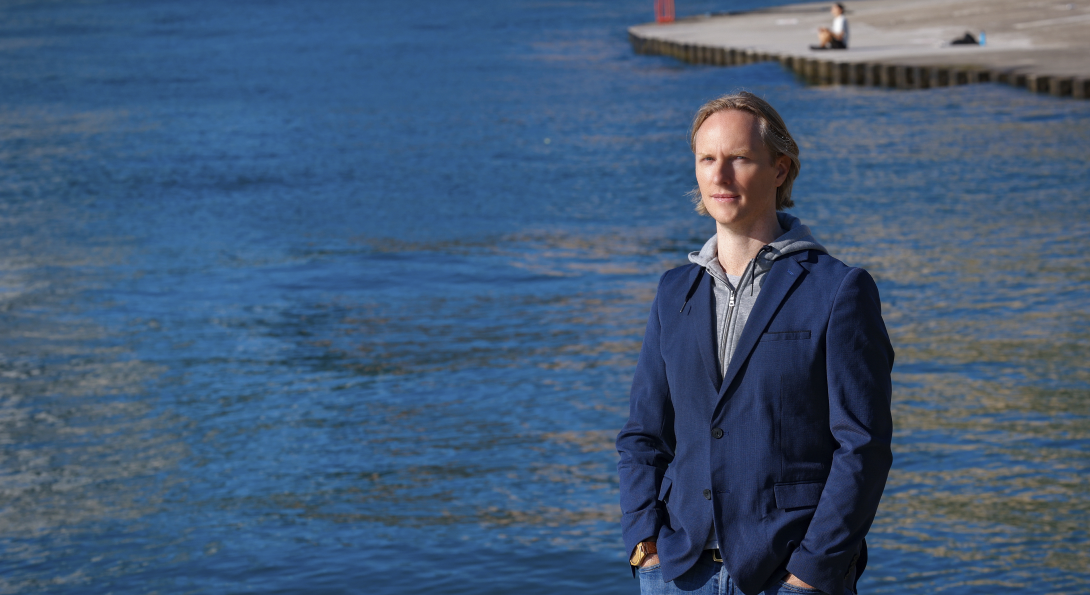Water Crisis

Finding new ways to solve water shortages
By David Staudacher
Text block one Heading link
Water is our most precious resource, but climate change, pollution, and a growing human population has made this resource even more scarce. More than 2 billion people live in water-stressed countries, and a recent survey found that 40 out of 50 state water managers in the United States expect water shortages in
the coming years.
To reduce this scarcity, two professors in civil, materials and environmental engineering are looking around in the world to find better ways to reclaim and reuse both fresh water and wastewater.
Analyzing water circularity Heading link
To find best practices in water reuse, Associate Professor Sybil Derrible and his team have studied the work done in cities and countries around the world. In search of new water sources, many countries are turning to ocean water—which constitutes 70 percent of the planet’s water. But removing salt from water—a process called desalination—is costly, both in terms of energy and money.
“In places like Singapore, Hong Kong, Saudi Arabia, and Israel, there are only a few ways to get water,” Derrible said. “One is from the sea through desalination, and another is by reclaiming used water. Desalination requires a lot of electricity. Recycling used water can save energy and money.” Derrible and his team are developing a framework to analyze water circularity—which is the practice of not wasting or losing water and recovering the resources it contains as it is reused in multiple applications—by examining how cities collect, treat, and reuse water. In Singapore, for example, municipalities collect rainwater and recycle wastewater back to industries where it doesn’t need to be treated. Derrible
wants to create a universal framework that takes into account ideas like this and that can be used anywhere in the world, including places where fresh water is not scarce.
“Many industries require extensive volumes of water, but the water does not need to be potable. Here, used water that was minimally treated can be sufficient,” he said. Some places in the United States are already reusing wastewater. In warm climates like Las Vegas, wastewater is used to irrigate golf courses.
“It’s a big deal because the future of many cities includes reusing water and it is becoming more and more common for many cities in the world because water is a precious resource,” he said.
Also, in most countries, water distribution systems consist of large, highly pressurized pipe networks that require an excessive amount of energy and that are vulnerable to large-scale contamination if something goes wrong. However, in Hanoi, Vietnam, water is distributed at low pressures, and most buildings are equipped with a basement tank, a rooftop tank, and separate water treatment processes, resulting in a system that consumes less energy and that is more resilient. “We can learn from Hanoi, as we imagine the future of water distribution,” Derrible said.
New ways to reuse wastewater Heading link
Even a city like Chicago—with its vast freshwater resource in Lake Michigan—can benefit from reusing water. Professor Krishna Reddy is working with the Metropolitan Water Reclamation District of Greater Chicago (MWRDGC) and several UIC professors on an interdisciplinary project investigating ways to reuse treated wastewater from MWRDGC processing plants in the region and beyond.
The district discharges some treated water into the Chicago River, where it makes its way into the Mississippi River and ultimately into the Gulf of Mexico. But “from a sustainability point of view, this is not a good reuse of a resource,” Reddy said. “We suggest recycling the treated water where it can be reused for beneficial purpose without any further treatment.” The researchers are gathering data to understand how much water MWRDGC produces, uses, and discharges, and are examining the quality of the water the plants both take in and discharge. One goal is to find new uses for wastewater.
“One interesting thing is that there are a large number of industries near the water reclamation plants, and they use a lot of water,” Reddy said. “Maybe some of the industries nearby could use the treated water, or it could be used for other applications like agriculture or recreational parks irrigation, toilet flushing, landscaping, and golf courses.”
The team plans to conduct a sustainability assessment of the MWRDGC to understand aspects such as economic benefits, social benefits, environmental impact, and more. By conducting the research now, they are laying the groundwork for future endeavors that could help secure funding for bigger projects.
The researchers are also studying water recycling projects in California, Arizona, and New Mexico. “In Chicago, we don’t have a water scarcity problem, so there is no push to recycle,” he said. “We say we are doing a lot of sustainable things in Chicago, but this is obvious that we are not doing enough. We can do a lot with treated water, but in the end, we are throwing away this resource.”